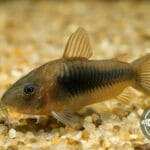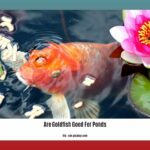Unlock the shimmering secrets of the Celestial Pearl Danio (Galaxy Rasbora): a comprehensive guide to care, breeding, and creating a thriving nano aquarium habitat. These tiny jewels, resembling a living galaxy, add a captivating sparkle to any peaceful community tank. This guide covers everything from setting up the perfect environment to breeding these dazzling fish and addressing potential health concerns. Dive in and discover the mesmerizing world of Celestial Pearl Danios!
Quick Facts: Galaxy Rasbora at a Glance
| Feature | Details |
|---|---|
| Scientific Name | Danio margaritatus (also Celestichthys margaritatus) |
| Common Names | Celestial Pearl Danio, Galaxy Rasbora |
| Origin | Myanmar, Thailand |
| Size | ~1 inch (2.1 cm) |
| Lifespan | 2-3 years (though some may live longer with exceptional care) |
| Temperament | Peaceful, Shoaling |
Designing the Perfect Celestial Pearl Danio Habitat
Replicating the natural environment of the Celestial Pearl Danio is key to their well-being. Imagine a clear Southeast Asian stream: lush vegetation, dark, sandy bottom, and plenty of nooks and crannies. A 10-gallon tank is the absolute minimum for a small group, but a larger tank is always preferable, especially for larger schools. More space likely reduces stress and allows for more natural behaviors. A dark substrate enhances their vibrant colors. Add plants, driftwood, and rocks to create hiding places and simulate their natural habitat. This not only provides security but also creates a visually stunning aquascape.
Water Parameters: The Key to Healthy CPDs
Maintaining the correct water chemistry is crucial for Celestial Pearl Danios. Aim for a temperature range of 68-77°F (20-25°C) – generally, room temperature works well. The ideal pH is between 6.5 and 7.5 (slightly acidic to neutral), and water hardness (dGH) should be between 4 and 8. Regular testing with a reliable aquarium test kit is essential, acting as a preventative health check for your tank.
A Gourmet Guide to Feeding Celestial Pearl Danios
These little omnivores relish a varied diet. High-quality flake food and micro-pellets form a good foundation, supplemented with live or frozen daphnia and brine shrimp. Small, frequent meals are preferable, preventing uneaten food from decaying and affecting water quality. Discover more about what other pets can eat, such as can chickens eat potato peels.
Creating a Harmonious Community: Choosing Tank Mates
Selecting tank mates for CPDs requires careful consideration. Opt for small, peaceful species that won’t harass or intimidate them. Good choices include other small rasboras, peaceful tetras (like ember or neon tetras), and some Corydoras catfish. Shrimp, such as cherry shrimp, can also be suitable companions. Avoid large, aggressive fish or known fin-nippers.
| Compatible Tank Mates | Incompatible Tank Mates |
|---|---|
| Small Rasboras, Peaceful Tetras | Large, Aggressive Cichlids, Fin-Nipping Barbs |
| Corydoras Catfish, Otocinclus Catfish | Large Loaches, Crayfish (most species) |
| Shrimp (Cherry, Amano) |
Breeding Celestial Pearl Danios: Expanding Your Galaxy
Breeding CPDs can be a rewarding experience. A separate, heavily planted breeding tank with fine-leaved plants offers a safe haven for eggs and fry. Slightly softer water may encourage spawning. CPDs are egg scatterers, distributing their eggs among the plants. Once hatched, feed the fry infusoria or specialized fry food.
Common Diseases and Their Prevention
While generally hardy, CPDs are susceptible to common freshwater fish diseases, often stemming from poor water quality. Regular water changes and a clean tank are the best preventative measures. Researching common diseases will enable you to identify and address issues promptly. Early detection significantly increases the chances of successful treatment.
Maintaining a Thriving CPD Tank
Regular maintenance is crucial for a healthy aquarium environment. Weekly partial water changes (around 25%) replenish minerals and remove waste. Gravel vacuuming during water changes maintains a clean substrate. Trim plants regularly and manage algae growth to maintain a beautiful and healthy tank.
Debunking the Fin-Nipping Myth
CPDs sometimes get a reputation for fin-nipping. While some occasional nipping might occur, it’s typically due to stress (often from overcrowding or insufficient food) rather than inherent aggression. Ensuring a spacious tank, a varied diet, and compatible tank mates minimizes this behavior. Learn more about identifying animal droppings like chipmunk feces.
CPDs in the Community Tank: A Guide to Success
CPDs generally thrive in community tanks with appropriate companions and environmental conditions. Choosing peaceful tank mates, especially those occupying different tank levels, helps prevent overcrowding and territorial disputes. A well-planted tank with appropriate water parameters and gentle aeration creates a comfortable and enriching environment for your CPDs.
Conclusion: A Universe of Shimmering Delight
With proper care and attention, Celestial Pearl Danios will reward you with their vibrant beauty and captivating behavior. By following this guide and continuing to learn about these fascinating fish, you can create a thriving aquatic galaxy in your own home.
- Unlocking 2-Letter Words with U: The Definitive Guide - April 4, 2025
- Unlock Words with the Letters THREE: Top Unscramble Tools 2025 - April 4, 2025
- Master Scrabble: X & Z Words for High Scores - April 4, 2025
















